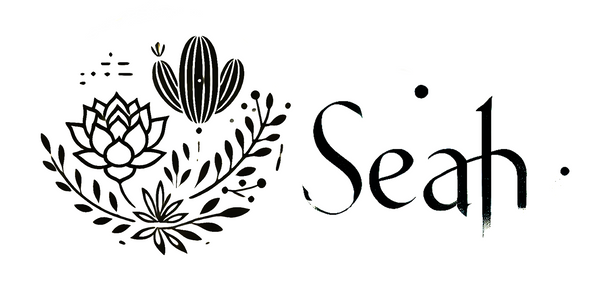graptopetalum paraguayense - Echeveria Ghost
graptopetalum paraguayense - Echeveria Ghost
Out of stock
Couldn't load pickup availability
📝 Description
Graptopetalum paraguayense, commonly referred to as Echeveria Ghost or Ghost Plant, is a striking succulent known for its beautiful rosette formation and color-changing leaves. Here's a detailed overview of its morphological characteristics, growth habits, maintenance points, and reproduction method:
Morphological Characteristics
- Leaves: The Ghost Plant has thick, fleshy leaves that form in rosettes. These leaves are opalescent, meaning they can change color from blue-green to pink or yellow depending on the amount of sunlight they receive. The leaves are somewhat flat and can have a powdery coating or “bloom” that helps protect them from the sun.
- Size: It typically grows up to 20 cm (8 inches) in height with a spread of about 30 cm (12 inches). The rosettes can grow up to 15 cm (6 inches) in diameter.
- Flowers: It blooms in the spring with small, star-shaped, white flowers with red spots, which appear on arching inflorescences extending from the rosette.
Growth Habits
- Light: Prefers full sun to partial shade. More sunlight enhances the leaf colors, turning them into vibrant shades of pink, yellow, or peach.
- Temperature: It’s cold-hardy to about -6°C (20°F), but it is best to protect it from frost to avoid damage.
- Water: Water sparingly, only when the soil has completely dried out. It is drought-tolerant and susceptible to root rot if overwatered.
Maintenance Points
- Soil: Requires well-draining soil. A cactus or succulent potting mix is ideal.
- Pot: Should be planted in a pot with drainage holes to prevent water accumulation.
- Fertilizer: Fertilizing is not strictly necessary but applying a diluted, balanced, liquid succulent fertilizer in the growing season can promote growth.
- Pruning: Dead or damaged leaves should be removed to maintain health and appearance.
Reproduction Method
- Offsets: The Ghost Plant produces offsets that can be separated and replanted to propagate new plants. This is the easiest method of propagation.
- Leaf Cuttings: Leaves easily root when removed and placed on top of soil. Allow the leaf to callus over for a few days before laying it on well-draining soil. Roots and a new plant will eventually form at the cut end.
- Stem Cuttings: If the plant becomes leggy, stem cuttings can be taken, allowed to callus, and then replanted in soil.
- Seeds: Although not the most common method, Graptopetalum paraguayense can be grown from seeds sown in well-draining soil and kept moist until germination.
Graptopetalum paraguayense is prized for its low-maintenance care and its strikingly beautiful, color-changing leaves, making it a popular choice for succulent gardens, rockeries, and as a potted indoor plant. Its ability to propagate easily from leaves and offsets also makes it a favorite among enthusiasts.
🌿 Care Tips
Plant Care
Light
Water
Soil
Temperature
Hardiness
Fertilizer
Propagation: Leaf/offset cuttings
Common issues: Etiolation, mealybugs, rot
🌟 Note: It’s normal for succulents to appear slightly shriveled after shipping. They usually recover within a few days in a suitable environment.
📦 Shipping Info
Seah Shipping Policy
Effective Date: November 2025
This Shipping Policy applies to orders delivered within the continental United States (the lower 48 states). By purchasing from Seah, you agree to the terms below.
1) Shipping Cost & Free Shipping
- Automatic rate calculation: Shipping is calculated at checkout based on weight, destination ZIP and carrier rates.
- Free Standard Shipping: Orders $59+ (pre-tax, after discounts) ship free to the lower 48 states.
- Alaska, Hawaii, Puerto Rico & other territories: Not eligible for free shipping or standard flat offers at this time.
- Taxes/Duties: Applicable sales tax and any fees are shown at checkout.
2) Processing Schedule
- Business days only: We process and ship Monday–Friday. No shipping on weekends or U.S. federal holidays.
- Handling time: 1–3 business days after payment confirmation.
- Cut-off time: Orders placed before 3:00 PM (PST) are prioritized for same-day processing; others roll to the next business day.
- Changes/Cancellations: Email support@seah.co within 12 hours of purchase; after that, the order may already be in processing.
3) Transit Times
| Method | Estimated Transit | Total ETA (Handling + Transit) |
|---|---|---|
| Standard | 5–8 business days | 6–11 business days |
| Express | 3–4 business days | 4–7 business days |
ETAs are estimates. Weather, holidays, carrier delays or high-volume periods may extend delivery times.
4) Seasonal Temperature & Plant Safety
- Winter (Nov–Mar): We strongly recommend adding a heat pack at checkout to protect plants from freezing. Orders shipped without a heat pack during cold conditions are not covered for cold damage.
- Summer heat: During extreme heat waves, we may hold shipments until temperatures normalize. We’ll notify you if there’s a hold.
- Packaging: Plants are carefully packed (bare-root or potted by type/size) to minimize transit stress.
5) Carriers & Tracking
- We ship via USPS / UPS / FedEx, selected automatically for best service to your address.
- When your order ships, you’ll receive a tracking email. Tracking typically activates within 24 hours.
- If you haven’t received tracking within 3 business days, contact us at support@seah.co or +1 (626)-999-1314.
6) Address Changes & Delivery Issues
- Before shipment: Request address changes within 12 hours of ordering.
- After shipment: We can’t modify the address once dispatched. Please contact the carrier for redirection options.
- PO Boxes: Supported for USPS only; UPS/FedEx require a street address.
- Seah isn’t responsible for delays or loss due to incorrect addresses provided at checkout.
7) Service Area
We currently ship to the continental U.S. (lower 48 states). Orders to AK/HI/PR and other territories are not eligible for free shipping and may be restricted.
8) Support
- Hours: Mon–Fri, 9:00 AM – 5:00 PM (PST)
- Phone: +1 (626)-999-1314
- Email: support@seah.co
- Address: 7870 Margaux Pl, Rancho Cucamonga, CA 91739, United States
Thank you for supporting our California nursery—each plant is hand-selected and packed with care. 🌱


